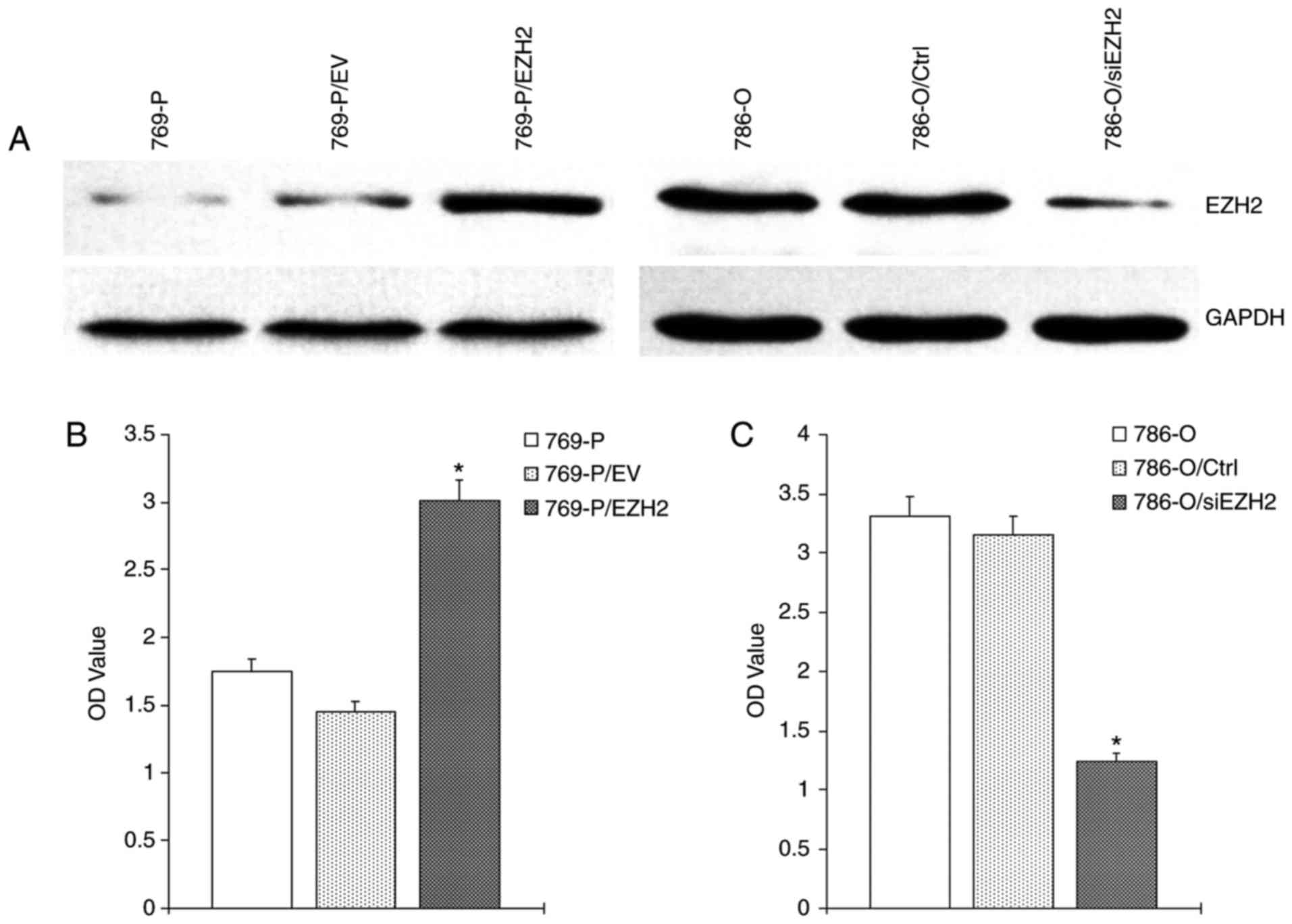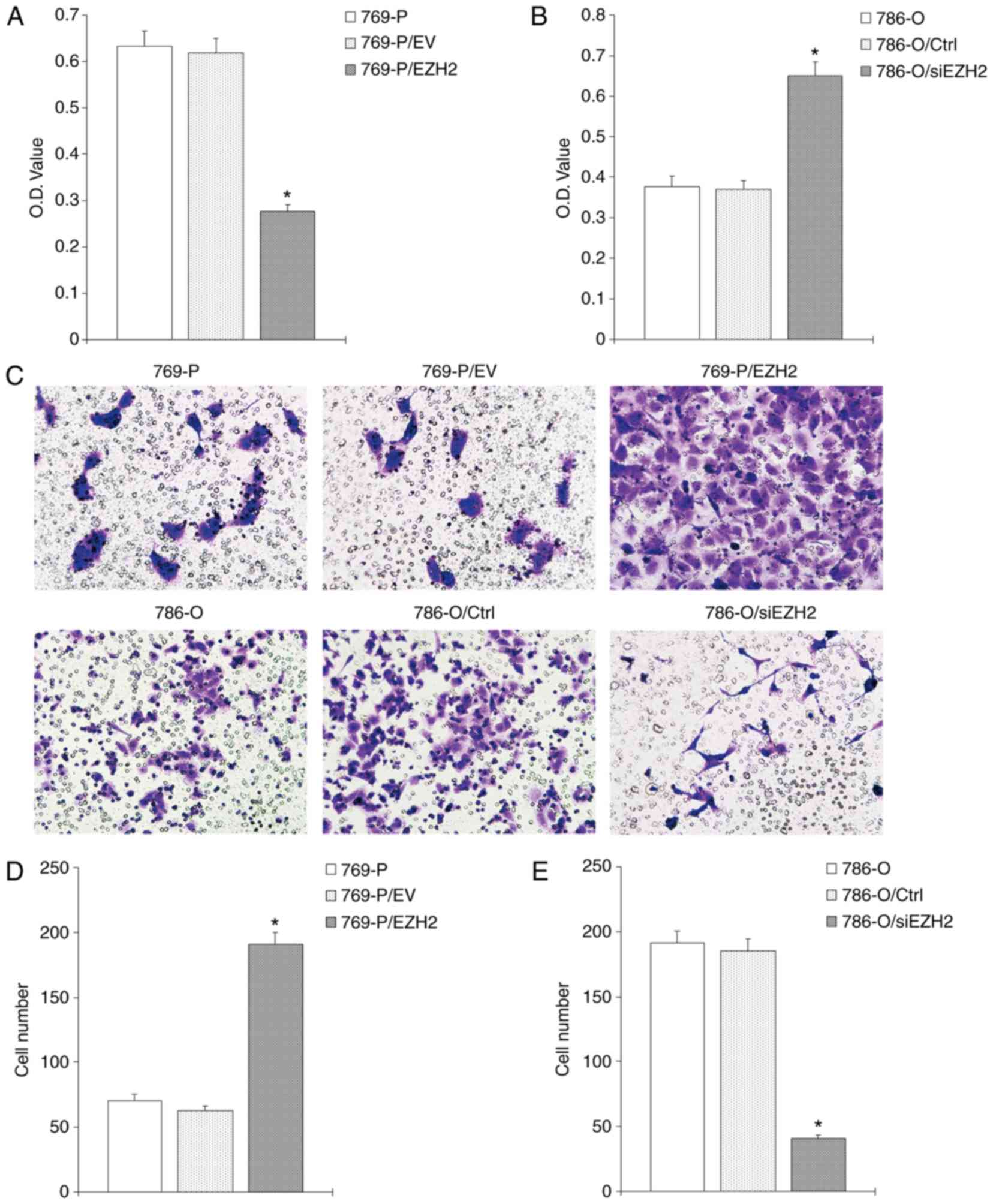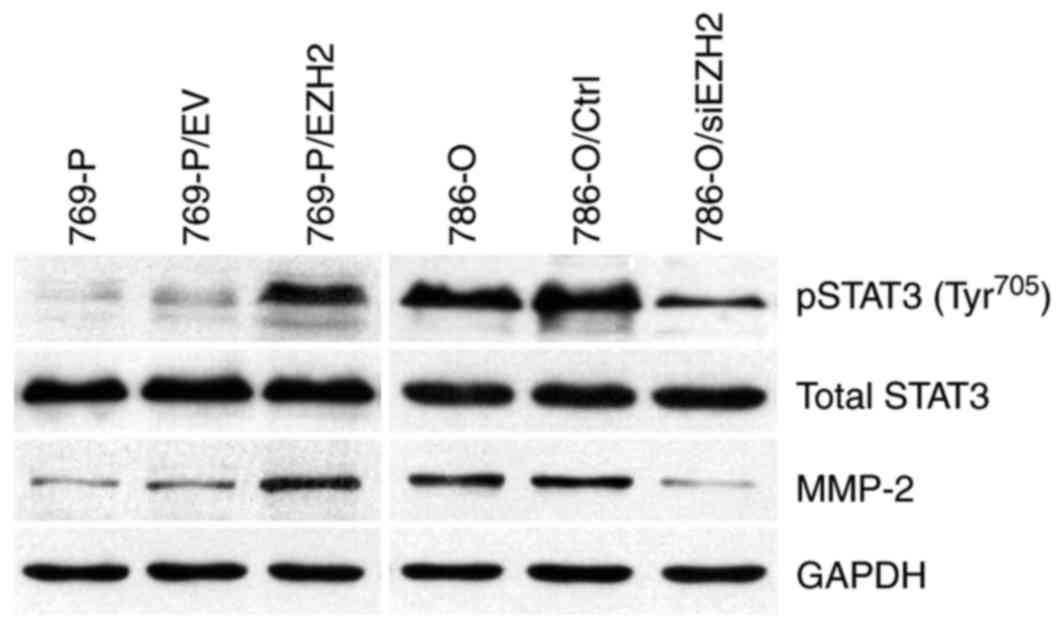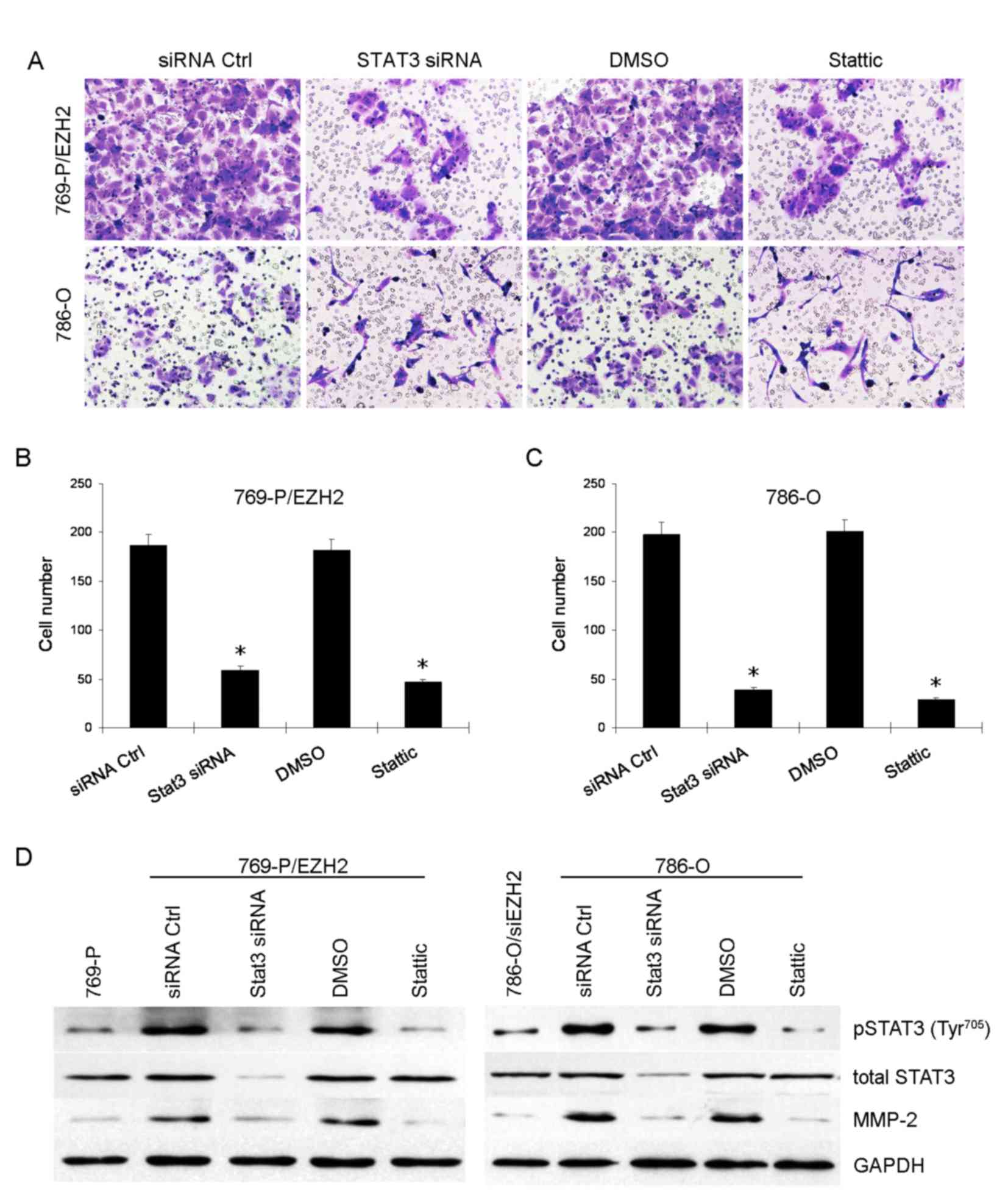|
1
|
Siegel RL, Miller KD and Jemal A: Cancer
Statistics, 2017. CA Cancer J Clin. 67:7–30. 2017. View Article : Google Scholar : PubMed/NCBI
|
|
2
|
Heuer R, Gill IS, Guazzoni G, Kirkali Z,
Marberger M, Richie JP and de la Rosette JJ: A critical analysis of
the actual role of minimally invasive surgery and active
surveillance for kidney cancer. Eur Urol. 57:223–232. 2010.
View Article : Google Scholar : PubMed/NCBI
|
|
3
|
Chin AI, Lam JS, Figlin RA and Belldegrun
AS: Surveillance strategies for renal cell carcinoma patients
following nephrectomy. Rev Urol. 8:1–7. 2006.PubMed/NCBI
|
|
4
|
Ritchie AW and Chisholm GD: The natural
history of renal carcinoma. Semin Oncol. 10:390–400.
1983.PubMed/NCBI
|
|
5
|
Curti BD: Renal cell carcinoma. JAMA.
292:97–100. 2004. View Article : Google Scholar : PubMed/NCBI
|
|
6
|
Hoffman AM and Cairns P: Epigenetics of
kidney cancer and bladder cancer. Epigenomics. 3:19–34. 2011.
View Article : Google Scholar : PubMed/NCBI
|
|
7
|
Czermin B, Melfi R, McCabe D, Seitz V,
Imhof A and Pirrotta V: Drosophila enhancer of Zeste/ESC complexes
have a histone H3 methyltransferase activity that marks chromosomal
Polycomb sites. Cell. 111:185–196. 2002. View Article : Google Scholar : PubMed/NCBI
|
|
8
|
Viré E, Brenner C, Deplus R, Blanchon L,
Fraga M, Didelot C, Morey L, Van Eynde A, Bernard D, Vanderwinden
JM, et al: The Polycomb group protein EZH2 directly controls DNA
methylation. Nature. 439:871–874. 2006. View Article : Google Scholar : PubMed/NCBI
|
|
9
|
Varambally S, Dhanasekaran SM, Zhou M,
Barrette TR, Kumar-Sinha C, Sanda MG, Ghosh D, Pienta KJ, Sewalt
RG, Otte AP, et al: The polycomb group protein EZH2 is involved in
progression of prostate cancer. Nature. 419:624–629. 2002.
View Article : Google Scholar : PubMed/NCBI
|
|
10
|
Bachmann IM, Halvorsen OJ, Collett K,
Stefansson IM, Straume O, Haukaas SA, Salvesen HB, Otte AP and
Akslen LA: EZH2 expression is associated with high proliferation
rate and aggressive tumor subgroups in cutaneous melanoma and
cancers of the endometrium, prostate, and breast. J Clin Oncol.
24:268–273. 2006. View Article : Google Scholar : PubMed/NCBI
|
|
11
|
Rao ZY, Cai MY, Yang GF, He LR, Mai SJ,
Hua WF, Liao YJ, Deng HX, Chen YC, Guan XY, et al: EZH2 supports
ovarian carcinoma cell invasion and/or metastasis via regulation of
TGF-beta1 and is a predictor of outcome in ovarian carcinoma
patients. Carcinogenesis. 31:1576–1583. 2010. View Article : Google Scholar : PubMed/NCBI
|
|
12
|
Lee HW and Choe M: Expression of EZH2 in
renal cell carcinoma as a novel prognostic marker. Pathol Int.
62:735–741. 2012. View Article : Google Scholar : PubMed/NCBI
|
|
13
|
Hinz S, Weikert S, Magheli A, Hoffmann M,
Engers R, Miller K and Kempkensteffen C: Expression profile of the
polycomb group protein enhancer of Zeste homologue 2 and its
prognostic relevance in renal cell carcinoma. J Urol.
182:2920–2925. 2009. View Article : Google Scholar : PubMed/NCBI
|
|
14
|
Zhang D, Xue Y, Yang X, Gan W, Chong T,
Wang Z and He D: 118 EZH2 is overexpressed and contributes to
apoptotic-resistance and metastasis in renal cell carcinoma. J
Urol. 185 Suppl:e502011. View Article : Google Scholar
|
|
15
|
Santoni M, Conti A, Piva F, Massari F,
Ciccarese C, Burattini L, Cheng L, Lopez-Beltran A, Scarpelli M,
Santini D, et al: Role of STAT3 pathway in genitourinary tumors.
Future Sci OA. 1:FSO152015. View Article : Google Scholar : PubMed/NCBI
|
|
16
|
Horiguchi A, Oya M, Shimada T, Uchida A,
Marumo K and Murai M: Activation of signal transducer and activator
of transcription 3 in renal cell carcinoma: A study of incidence
and its association with pathological features and clinical
outcome. J Urol. 168:762–765. 2002. View Article : Google Scholar : PubMed/NCBI
|
|
17
|
Kim DJ, Chan KS, Sano S and Digiovanni J:
Signal transducer and activator of transcription 3 (Stat3) in
epithelial carcinogenesis. Mol Carcinog. 46:725–731. 2007.
View Article : Google Scholar : PubMed/NCBI
|
|
18
|
Coghlin C and Murray GI: Current and
emerging concepts in tumor metastasis. J Pathol. 222:1–15. 2010.
View Article : Google Scholar : PubMed/NCBI
|
|
19
|
Ben-Baruch A: Site-specific metastasis
formation: Chemokines as regulators of tumor cell adhesion,
motility and invasion. Cell Adh Migr. 3:328–333. 2009. View Article : Google Scholar : PubMed/NCBI
|
|
20
|
Qin J, Yang B, Xu BQ, Smithc A, Xu L, Yuan
JL and Li L: Concurrent CD44s and STAT3 expression in human clear
cell renal cellular carcinoma and its impact on survival. Int J
Clin Exp Pathol. 7:3235–3244. 2014.PubMed/NCBI
|
|
21
|
Zhang F, Wang Z, Fan Y, Xu Q, Ji W, Tian R
and Niu R: Elevated STAT3 signaling-mediated upregulation of
MMP-2/9 confers enhanced invasion ability in multidrug-resistant
breast cancer cells. Int J Mol Sci. 16:24772–24790. 2015.
View Article : Google Scholar : PubMed/NCBI
|
|
22
|
Xuan X, Li S, Lou X, Zheng X, Li Y, Wang
F, Gao Y, Zhang H, He H and Zeng Q: Stat3 promotes invasion of
esophageal squamous cell carcinoma through up-regulation of MMP2.
Mol Biol Rep. 42:907–915. 2015. View Article : Google Scholar : PubMed/NCBI
|
|
23
|
Qiu Z, Huang C, Sun J, Qiu W, Zhang J, Li
H, Jiang T, Huang K and Cao J: RNA interference-mediated signal
transducers and activators of transcription 3 gene silencing
inhibits invasion and metastasis of human pancreatic cancer cells.
Cancer Sci. 98:1099–1106. 2007. View Article : Google Scholar : PubMed/NCBI
|













